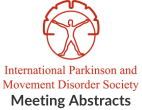Post-stroke Movement Disorders: A Systematic Review of the Clinical Spectrum, Neuroanatomy, and Demographic Characteristics of 577 Published cases
Objective: To comprehensively examine the spectrum of post-stroke movement disorders (PSMDs), with a focus on understanding their prevalence, clinical characteristics, neuroanatomical correlates, and demographic profiles…Paroxysmal non-kinesigenic dyskinesia: atypical neurological presentation of Lyme neuroborreliosis
Objective: To describe unusaul case of paroxysmal non-kinesigenic dyskinesia due to Lyme neuroborreliosis in a elderly female patient. Background: Nervous system Lyme disease is common…The Yips in Golf: Is it a Task-Specific Dystonia ?
Objective: The aim of this study is to classify the phenomenology of the Yips in Golf and investigate what underlies this anomalous movement by answering…Expanding the concept of “occupational dystonia”: data from the Italian Dystonia Registry
Objective: This study aimed to investigate whether certain occupations are associated with an increased risk of developing specific focal forms of idiopathic adult-onset dystonia (IAOD),…Recrudescence of a Compensated Hemidystonia-hemiatrophy Syndrome After COVID-19 Infection
Objective: To educate readers about a unique presentation of hemidystonia-hemiatrophy syndrome which presented after an infection with COVID-19 Background: Hemidystonia-hemiatrophy syndrome is a rare disorder…Exploring the non-invasive epigenetic screening test for hereditary dystonia DYT-KMT2B
Objective: To explore the altered H3K4me3 levels in non-neural tissue of DYT-KMT2B patients. Background: DYT-KMT2B, also known as DYT28, is a childhood-onset hereditary dystonia caused…Increased cerebellar grey matter in writer’s cramp patients: a morphometric signature of symptom compensation
Objective: This study focused on grey matter changes in the cerebellum by performing voxel-based morphometry (VBM) on infratentorial MRI scans of writers' cramp (WC) patients,…Visual Temporal Discrimination Threshold using a Virtual Reality Paradigm in Cervical Dystonia
Objective: To develop a Virtual Reality (VR) application to test temporal discrimination thresholds in cervical dystonia patients within an outpatient environment. Background: Temporal discrimination threshold…A Survey of Immunological Mechanisms in Cervical Dystonia
Objective: The overall goal was to delineate which aspects of the immune system may be most relevant to the biology of CD. Background: Although several…Movement Disorders Associated with Infectious Encephalitis in Pediatric Patients
Objective: The objective of our study is to report the clinical and imaging profile of a cohort of pediatric patients with movement disorders (MDs) associated…
- 1
- 2
- 3
- …
- 12
- Next Page »
